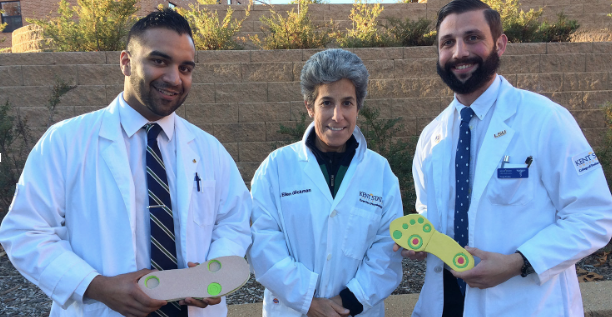Kent State students, professor create insole for people affected by diabetes
December 5, 2016
Kent State students and a professor from the College of Podiatric Medicine have developed an insole for diabetics called “Puncture-Pedic.”
Ellen Glickman, a professor, along with students Nilin Rao and Craig Verdin founded TheraPod LLC and have begun designing products focusing on foot pain, the most recent of which is the Puncture-Pedic Insole.
“If a patient has any type of significant pain caused by an ulcer or a callus on their foot, they’re pretty much in pain until they are able to come to a podiatrist,” Rao said in a phone interview.
Once at the podiatrist, patients have their ulcers cleaned are given a shoe or boot that helps alleviate pressure.
But, Rao said, “There’s nothing currently available over-the-counter that a patient can go pick up prior to coming to the podiatrist.”
Rao said that most of these diabetic patients suffer from neuropathy, a lack of feeling in their feet, as a result of low blood pressure and poor immune health. As they put pressure on the same spots over and over while walking, sores can “open up” and become infected, potentially leading to amputation of the toes and feet.
“[Diabetics] were the first people we thought of when we came up with the concept. But, we then realized that there are a lot of people who can benefit from this technology as well,” Rao said. Any people who have medical issues with their feet can use the insoles, as well as athletes who are prone to developing blisters on their feet.
“People can buy the insole that is best suited to their pathology,” Rao said. The company would offer a few different types featuring different arrangements of fixed pressure points, but eventually, Rao said, they want to make the insoles “truly customizable.”
The insole is designed to be able to have specific “punctures” punched out, in order to lessen the pressure an ulcerated area would be exposed to.












